On the Dormition of the Theotokos, Greek Orthodox churches dedicated to Panagia swell with pilgrims. Women clutch icons, light candles, and make tama, solemn vows given in gratitude or petition. Some pray quietly for a child after years of heartbreak.
Women struggling to conceive post anonymously on Facebook.
“Has anyone worn the fertility belt of the Panagia from Vatopedi Monastery?” one asks. Replies flow in. “It worked for my cousin in Cyprus.” “I wore it and now have twins.” “Don’t forget to pray and fast.”
For centuries, the Agia Zoni (Holy Belt) has been one of Orthodoxy’s most revered relics. Believed to have belonged to the Virgin Mary, it is her only surviving earthly possession. Tradition holds that after her Dormition, she ascended into heaven, entrusting her camel-hair belt to the Apostle Thomas. From Jerusalem it travelled to Constantinople, where in the 9th century Empress Zoe embroidered it with gold in gratitude for a healing. After surviving wars, looting, and political upheaval, it found its home at the Holy Monastery of Vatopedi, Mount Athos.
Father Steven Scoutas, parish priest at St Spyridon in Kingsford, calls Dekapentavgousto “the Pascha (Easter) of the summer.”
“There is only one belt of the Panagia, treasured at Vatopedi Monastery. Sometimes the monks, in their kindness, drape strips of cloth to ‘borrow’ its blessing. The grace of Panagia is transferred to these strips and sent to the faithful,” he says.
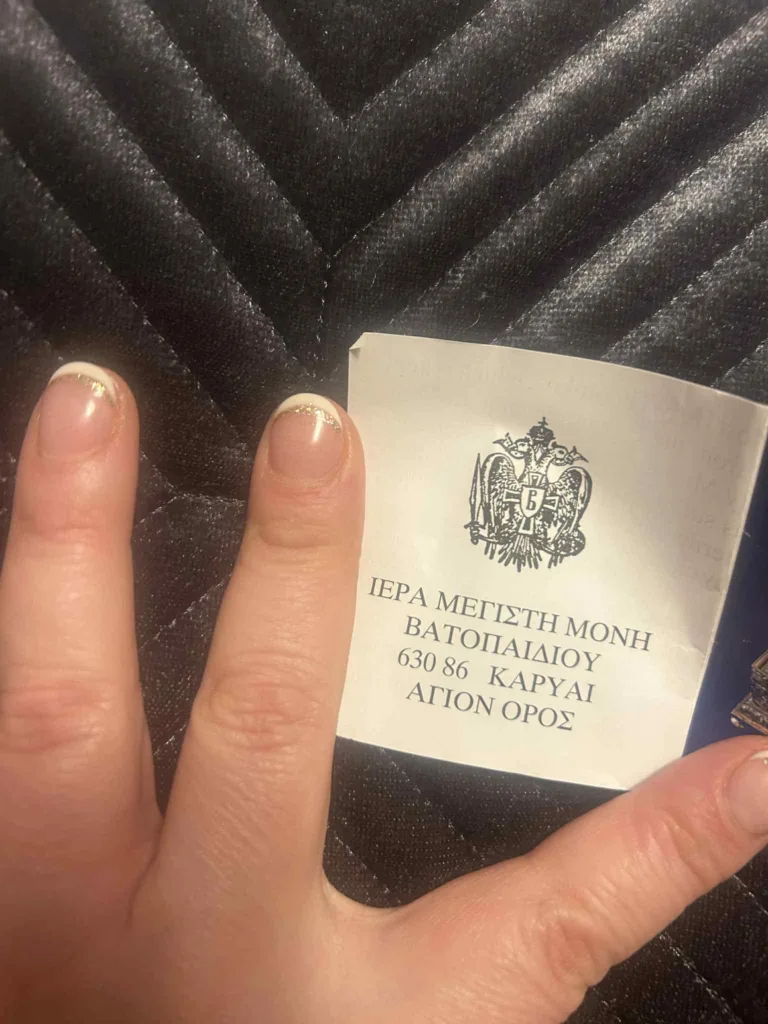
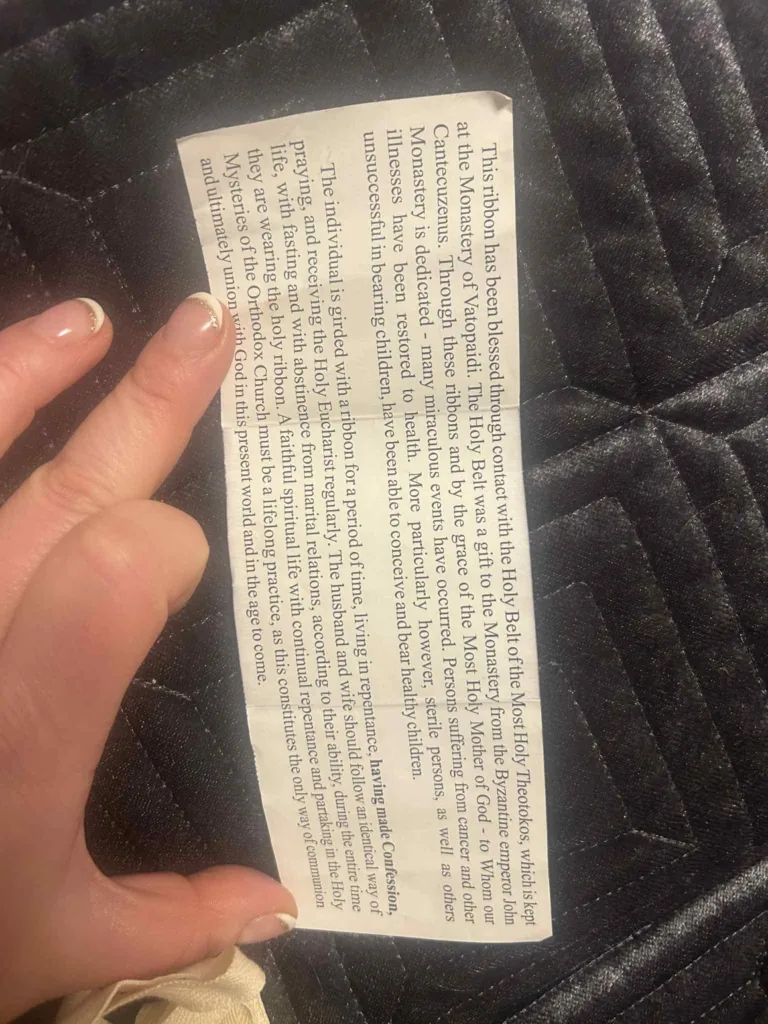
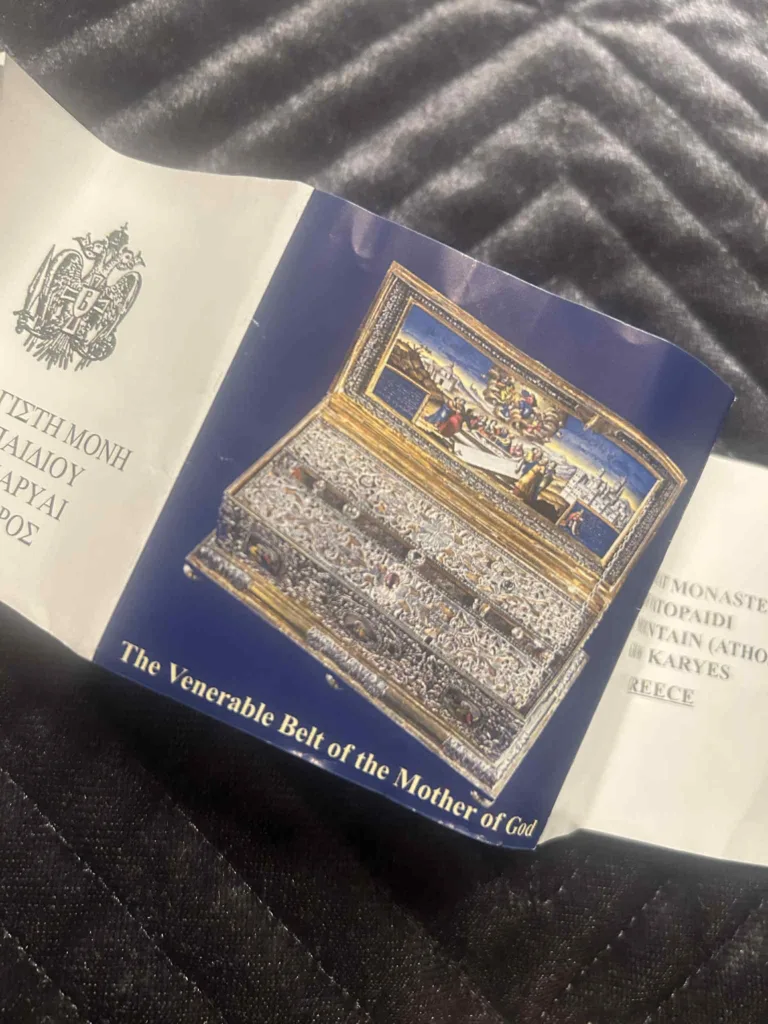
“In our own parish, couples struggling to conceive have worn them while kneeling, praying, fasting, and reading the Scriptures. Through Holy Confession their souls were purified, and then the unimaginable happens: they conceived. They give glory to God every day for responding to their prayers.”
Father Steven adds, “we have seen miracles not just of conception, but healing from serious illnesses. It is not the cloth itself but the power of faith that works through it.”
Melbourne fertility specialist Dr Nick Lolatgis echoes the same belief in a more clinical way.
“The focus of religious patients has sometimes led to outcomes that are medically surprising. You might call them ‘miracles’,” he says. “I see them as cases where hope, faith, and medicine meet in unexpected ways. I have seen women I didn’t expect to conceive who did after prayer and a positive mindset.”
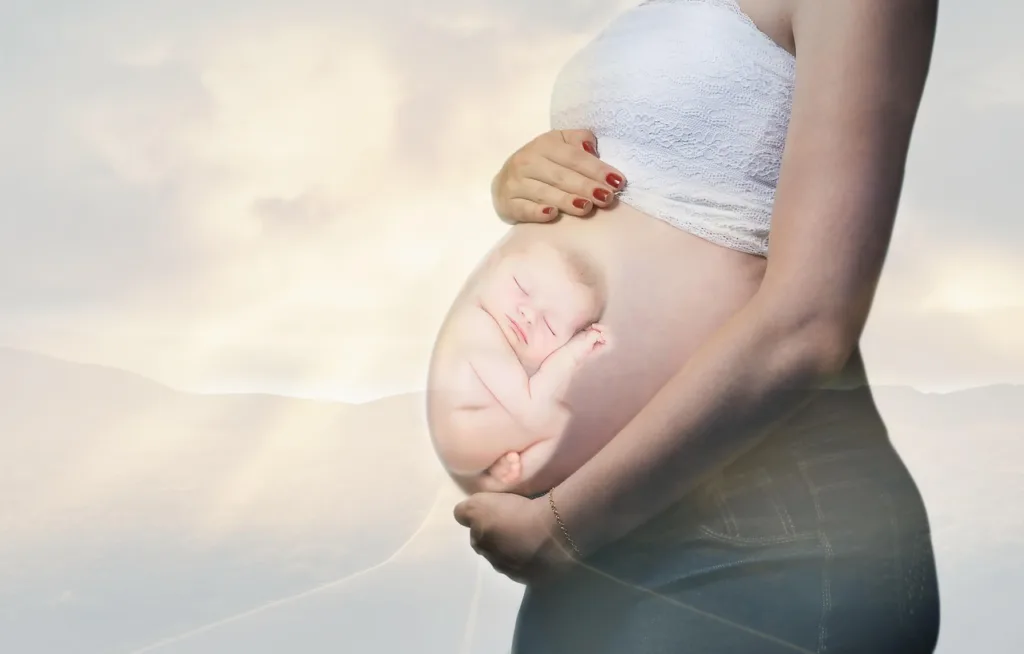
Fr Scoutas says “science and religion” can work together, though adds that the Church’s relationship with IVF is “complex.”
“The Church, however, celebrates every woman who conceives, whether naturally or with medical assistance. The only thing the Church is extreme in is love,” he says.
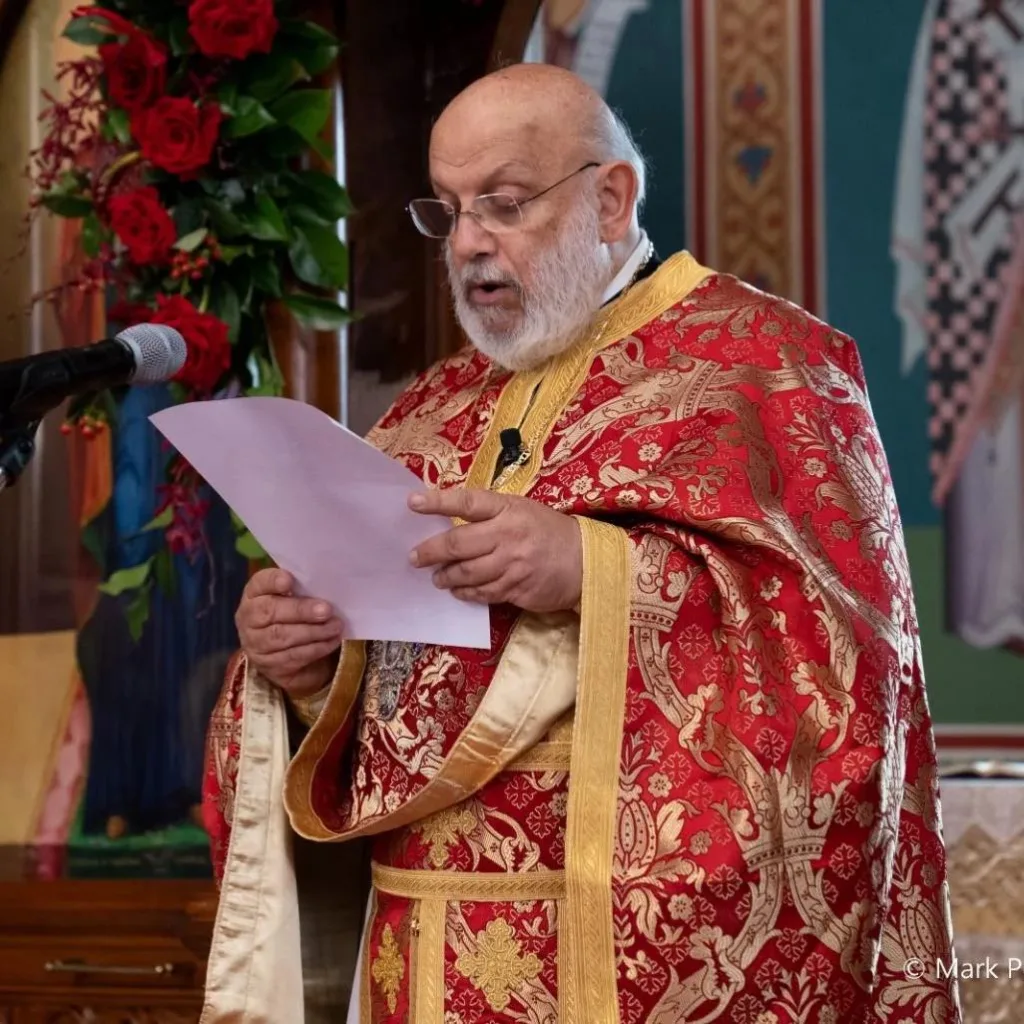
Psychologist Vasiliki Saltis, a Melbourne mother to a 4-year-old, had been trying for years to conceive.
“A mum who had been trying for a decade passed a fertility belt on to me. She told me to wear it, to pray, and then pass it on,” Vasiliki recalls.
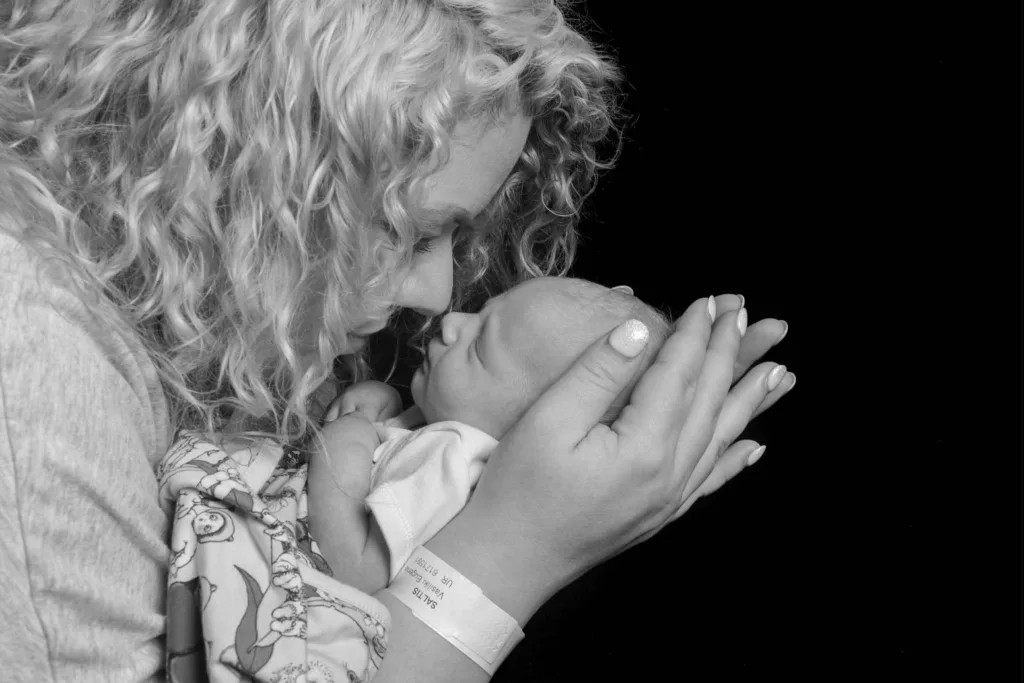
For her first pregnancy, she felt a warmth over her abdomen and the voice of an angel in English, which surprised her.
“Soon after, I fell pregnant with Leonidas. During that time icons appeared in my home that I neither purchased nor requested, including St Vryona from Cyprus,” she says. “Icons and saints come into your life for a reason, you just have to listen.”
Vasiliki created a prayer station, wrote letters to her deceased grandparents, and prayed.
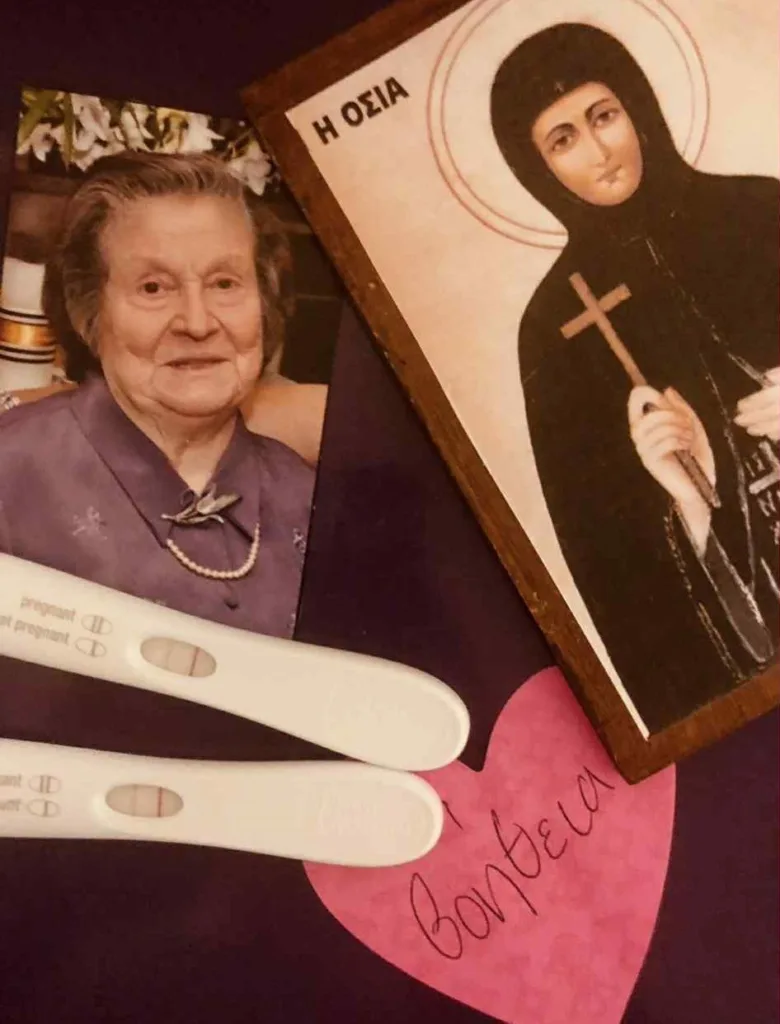
For Dimitra, the journey was filled with loss. She suffered six miscarriages and an ectopic pregnancy before finally conceiving naturally, and two more miscarriages after her eldest was born and still managing to conceive naturally despite having only one fallopian tube.
“Doctors told me I had no time and even suggested surrogacy,” she says. “We prayed to Panagia, wore the belt, and kept hope alive. My doctor later looked at my son and said, ‘He’s not meant to be here, but he is.’”
In gratitude, Dimitra planted an orange tree at Panagia Koumariani, Red Hill. Today, the family visit the tree with their children, a symbol of their promise and Panagia’s blessing.
Eleni travelled to Tinos to christen her twins, fulfilling a tama.
“I prayed to Panagia and asked for a child that I would christen at her church on Tinos. I was not expecting twins,” she says, not wishing to share her full name lest she be judged.
Despite family objections, Eleni kept her promise, and also crawled from the port to Panagia Evangelistria Church on her hands and sore knees.
“I was blessed with twins. Some say it may be a coincidence. But in my heart, I know,” she says.
Sometimes faith is tested. Sofie finally conceived with donor eggs after a pilgrimage to Tinos, only to lose her baby at 21 weeks to a genetic disorder.

“I know God took my daughter away,” she says, sharing a photo of her baby’s tiny urn beside Tinos holy water. “I believe He will bring me a child.”
She still visits monasteries and prays.
Father Steven says women should draw faith from Joacheim and Anna, the Virgin Mary’s parents and grandparents of Jesus.
“We know they were prayerful and deeply faithful in God and so, towards the end of their life they were rewarded,” he says, adding that “tools of God” like fertility belts can help.
For these women, the belt is a thread of faith – its ribbons carrying hope from Mount Athos to Greek Australian homes, binding science and spirituality, continuing a sacred tradition.
